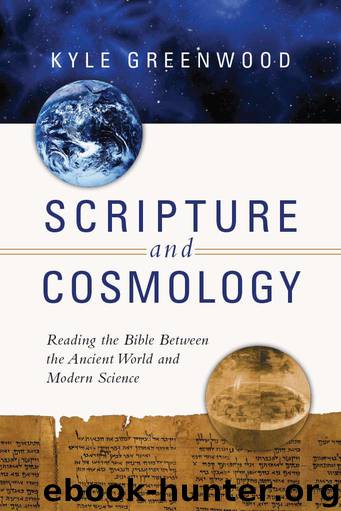Scripture and Cosmology: Reading the Bible Between the Ancient World and Modern Science by Greenwood Kyle

Author:Greenwood, Kyle [Greenwood, Kyle]
Language: eng
Format: azw3
Publisher: InterVarsity Press
Published: 2015-10-02T16:00:00+00:00
It is usually dangerous to generalize an entire century, let alone several centuries, according to a single defining element. However, thanks in large part to Jules Michelet’s History of France (1858), the term Renaissance has done just that for Europe in the fourteenth to the seventeenth centuries.1 The term was canonized by Jacob Burckhardt in 1860 with the publication of The Civilization of the Renaissance in Italy.2 For better or worse, the term suits historians as a generic term for the general cultural European climate between medieval Christendom and the modern era.
For reasons too complicated to explore here, the ingredients necessary for the Renaissance were in place long before its official onset in the fourteenth century. For reasons equally complicated, the fertile lands of Italy served also as the fertile fields for the Renaissance. At the heart of the Renaissance was the recognition that successful business and efficient government required literacy, and literacy required education. Universities not only enlarged their enrollments but also shifted their educational emphasis from theological studies to more practical fields in the humanities. The humanists, as they were called, were interested in subjects like grammar, philosophy, rhetoric and history, which they learned by appealing to the classical era of the Greco-Roman period (ca. 332 B.C. to A.D. 395). Humanists were not uninterested in theological concerns or religious ideas, but they “stressed earthly fulfillment rather than preparation for paradise.”3 So, while they were not unconcerned with matters of the church, they were more concerned with how they could improve their lives and the lives of their fellow humans. It was their contention that the best way to accomplish this was to reacquaint themselves with the art and literature of ancient Greece and Rome, which had never been surpassed, at least in the view of Petrarch, the father of humanism.4
Thanks to the humanistic achievement of the period, the world’s museums, churches and homes are now adorned with the paintings and sculptures of the artistic visionaries of the Renaissance. Michelangelo gave us sculptures of David and Moses, as well as his paintings Pietà and Creation of Adam in the Sistine Chapel. Leonardo da Vinci’s Last Supper and Mona Lisa are among the most famous paintings of all time. Other masters of the period include Raphael (Madonna in the Meadow), Donatello (Saint George and David), Botticelli (Venus), Mantegna (The Dead Christ) and Ghiberti (Gates of Paradise).5
Download
This site does not store any files on its server. We only index and link to content provided by other sites. Please contact the content providers to delete copyright contents if any and email us, we'll remove relevant links or contents immediately.
The Five People You Meet in Heaven by Mitch Albom(3515)
The Secret Power of Speaking God's Word by Joyce Meyer(3065)
Real Sex by Lauren F. Winner(2986)
Name Book, The: Over 10,000 Names--Their Meanings, Origins, and Spiritual Significance by Astoria Dorothy(2960)
The Holy Spirit by Billy Graham(2914)
0041152001443424520 .pdf by Unknown(2812)
How The Mind Works by Steven Pinker(2770)
ESV Study Bible by Crossway(2757)
Ancient Worlds by Michael Scott(2648)
Churchill by Paul Johnson(2541)
The Meaning of the Library by unknow(2532)
The ESV Study Bible by Crossway Bibles(2528)
The Gnostic Gospels by Pagels Elaine(2495)
MOSES THE EGYPTIAN by Jan Assmann(2393)
Jesus by Paul Johnson(2330)
City of Stairs by Robert Jackson Bennett(2326)
The Complete Dead Sea Scrolls in English (7th Edition) (Penguin Classics) by Geza Vermes(2254)
Ancient Near Eastern Thought and the Old Testament by John H. Walton(2205)
The Nativity by Geza Vermes(2202)
